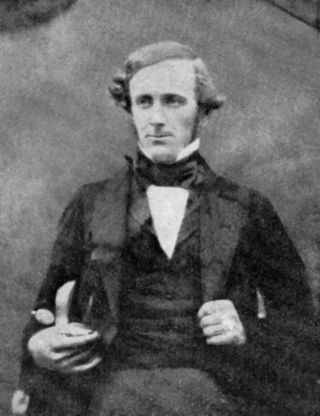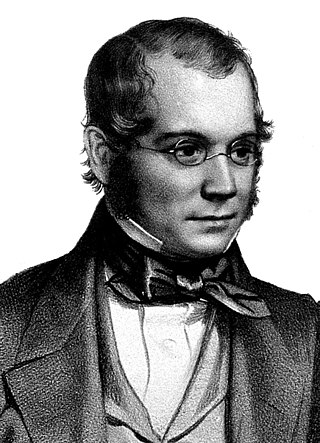Related Research Articles
The British Science Association (BSA) is a charity and learned society founded in 1831 to aid in the promotion and development of science. Until 2009 it was known as the British Association for the Advancement of Science (BA). The current Chief Executive is Hannah Russell. The BSA's mission is to get more people engaged in the field of science by coordinating, delivering, and overseeing different projects that are suited to achieve these goals. The BSA "envisions a society in which a diverse group of people can learn and apply the sciences in which they learn." and is managed by a professional staff located at their Head Office in the Wellcome Wolfson Building. The BSA offers a wide variety of activities and events that both recognise and encourage people to be involved in science. These include the British Science Festival, British Science Week, the CREST Awards, For Thought, The Ideas Fund, along with regional and local events.

The New York University Tandon School of Engineering is the engineering and applied sciences school of New York University. Tandon is the second oldest private engineering and technology school in the United States.

A Regius Professor is a university professor who has, or originally had, royal patronage or appointment. They are a unique feature of academia in the United Kingdom and Ireland. The first Regius Professorship was in the field of medicine, and founded by the Scottish King James IV at the University of Aberdeen in 1497. Regius chairs have since been instituted in various universities, in disciplines judged to be fundamental and for which there is a continuing and significant need. Each was established by an English, Scottish, or British monarch, and following proper advertisement and interview through the offices of the university and the national government, the current monarch still appoints the professor. This royal imprimatur, and the relative rarity of these professorships, means a Regius chair is prestigious and highly sought-after.

Lviv Polytechnic National University is a public university in Lviv, Ukraine, founded in 1816. According to the Times Higher Education, as of 2024, it ranks first as a technical institution of higher education and second among all institutions of higher education after Sumy State University in Ukraine. Lviv Polytechnic is also the largest educational institution in Ukraine by the number of students and one of the largest by the number of faculties and departments.

The Warsaw University of Technology is one of the leading institutes of technology in Poland and one of the largest in Central Europe. It employs 2,453 teaching faculty, with 357 professors. The student body numbers 36,156, mostly full-time. Its 19 faculties (divisions) covering almost all fields of science and technology are located in Warsaw, with the exception of one, which is in Płock.

Mason Science College was a university college in Birmingham, England, and a predecessor college of the University of Birmingham. Founded in 1875 by industrialist and philanthropist Sir Josiah Mason, the college was incorporated into the University of Birmingham in 1900. Two students of the college, Neville Chamberlain and Stanley Baldwin, later went on to become prime ministers of the United Kingdom.

Sir Edward Frankland, was an English chemist. He was one of the originators of organometallic chemistry and introduced the concept of combining power or valence. An expert in water quality and analysis, he was a member of the second royal commission on the pollution of rivers, and studied London's water quality for decades. He also studied luminous flames and the effects of atmospheric pressure on dense ignited gas, and was one of the discoverers of helium.

Politehnica University of Bucharest is a technical university in Bucharest, Romania founded in 1818. Politehnica University is classified by the Ministry of Education as an advanced research and education university.

David Thomas Ansted FRS was an English professor of geology and author of numerous books on geology. His role as a teacher at Addiscombe Military Seminary, where future East India Company army officers were trained, had an influence on the study of geology in the colonies.
Olgierd Cecil Zienkiewicz was a British academic of Polish descent, mathematician, and civil engineer. He was born in Caterham, England. He was one of the early pioneers of the finite element method. Since his first paper in 1947 dealing with numerical approximation to the stress analysis of dams, he published nearly 600 papers and wrote or edited more than 25 books.
The Society of Engineers was a British learned society established in 1854. It was the first society to issue the professional title of Incorporated Engineer. It merged with the Institution of Incorporated Engineers (IIE) in 2005, and in 2006 the merged body joined with the Institution of Electrical Engineers to become the Institution of Engineering and Technology.

The East India Company Military Seminary was a British military academy at Addiscombe, Surrey, in what is now the London Borough of Croydon. It opened in 1809 and closed in 1861. Its purpose was to train young officers to serve in the East India Company's own army in India.

Oliver Byrne was a civil engineer and prolific author of works on subjects including mathematics, geometry, and engineering. He is best known for his 'coloured' book of Euclid's Elements. He was also a large contributor to Spon's Dictionary of Engineering.
The UCL Faculty of Mathematical and Physical Sciences is one of the 11 constituent faculties of University College London (UCL). The Faculty, the UCL Faculty of Engineering Sciences and the UCL Faculty of the Built Envirornment together form the UCL School of the Built Environment, Engineering and Mathematical and Physical Sciences.
The Onsager Medal (Onsagermedaljen) is a scholastic presentation awarded to researchers in one or more subject areas of chemistry, physics or mathematics. The medal is awarded in memory of Lars Onsager, who received Nobel Prize in Chemistry in 1968. The medal, designed by Harald Wårvik, commemorates the efforts of a single individual as chosen by the Onsager committee at the Norwegian University of Science and Technology (NTNU). The professorship awardee is expected to spend 3–6 months working at NTNU. The lectureship awardee will give a lecture at the university.

Sir Thomas Hudson Beare FRSE RSSA was a British engineer. He was successively Professor of Engineering at Heriot-Watt University, Edinburgh, at University College, London, and Regius Professor of Engineering at the University of Edinburgh.
Samuel Clegg was a British civil engineer.
Henry Palfrey Stephenson was a Scottish-born civil engineer, and a founder of the Society of Engineers.

The School of Engineering, Trinity College Dublin is the oldest engineering school in Ireland and one of the oldest in the world. It provides undergraduate, taught postgraduate and research degrees in engineering. It is the highest-ranked engineering school in Ireland by QS Rankings and by Times World University Rankings.
References
- 1 2 3 Smith, Denis (2001). Civil Engineering Heritage: London and the Thames Valley. Thomas Telford. p. 273. ISBN 9780727728760.
- 1 2 Russell (2003), p.22-23.
- ↑ Percy, Sholto (1840). Mechanics' Magazine and Journal of Science, Arts, and Manufactures (vol 32 ed.). London: Knight & Lacey. pp. 425–430.
- ↑ Robertson, F. (2010). Drawing distinctions: engineers, draughtsmen and artisans in nineteenth century Britain. British Society for the History of Science Postgraduate Conference. Department of History and Philosophy of Science, Cambridge. 5–7 January 2010. Retrieved: 30 September 2015.
- ↑ Deodar Road: Conservation Area Appraisal and Management Strategy Archived 2015-10-06 at the Wayback Machine , London Borough of Wandsworth, November 2010. Retrieved: 30 September 2015.
- ↑ David Thomas Ansted: 1814–80 Archived 2015-10-01 at the Wayback Machine , Darwin Correspondence Project. Accessed: 30 September 2015.
- ↑ Hawes, Susan M; Kolpas, Sid. "Oliver Byrne: The Matisse of Mathematics - Biography 1830-1839". Mathematical Association of America. Retrieved 30 September 2015.
- ↑ Samuel Clegg, Junior. Grace's Guide. Retrieved: 30 September 2015.
- ↑ Russell (2003), p.109.
- ↑ "Henry Palfrey Stephenson". Grace's Guide. Retrieved 30 September 2015.
- ↑ Story: Stewart, George Vesey, Encyclopedia of New Zealand. Retrieved: 30 September 2015.
Sources
- Russell, Colin A. (2003). Edward Frankland: Chemistry, Controversy and Conspiracy in Victorian England. Cambridge University Press. ISBN 9780521545815.